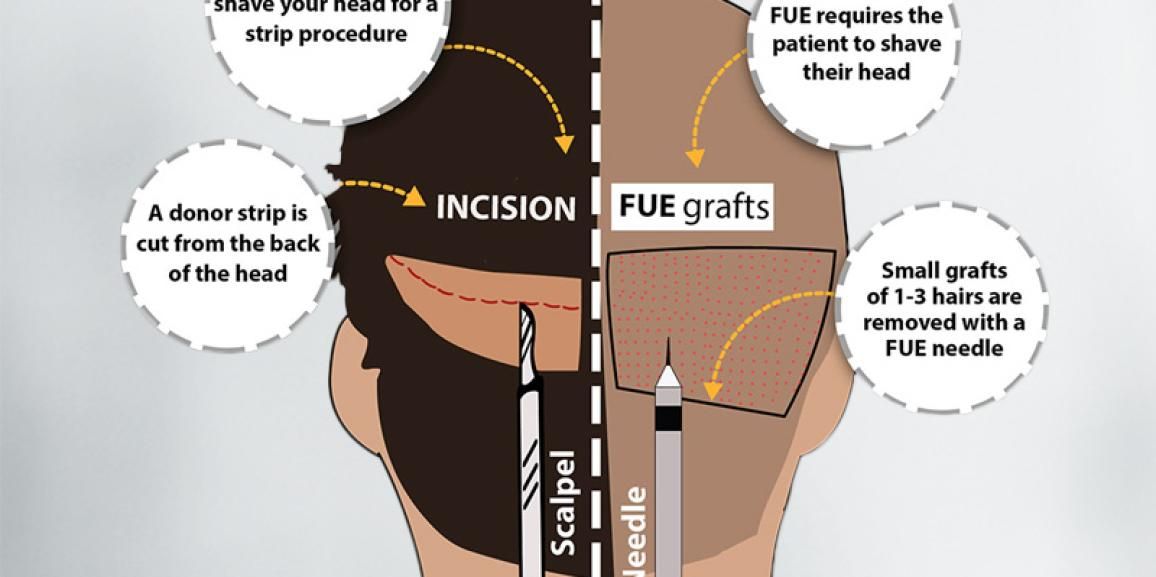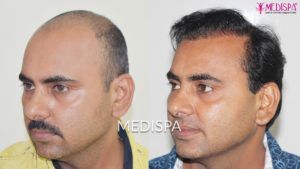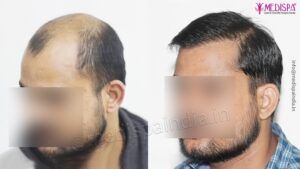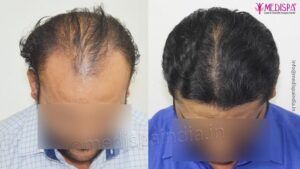
A difficult life experience is losing one’s hair. Being unable to regulate one’s hair fall could be disastrous for anyone because hairs are a crucial part of one’s beauty and appearance. Genetics, which can result in male pattern baldness, female pattern baldness, and androgenic alopecia, is the main cause of hair loss. Together with inadequate nutrition, a changed lifestyle, stress, and increased pollution are major causes of hair loss.
Making the decision to get a hair transplant is not simple; you must give yourself time to decide; it does not take place instantly. According to advice and advertising offering a permanent hair loss remedy, people frequently look for a variety of additional methods to address the hair loss issue. Nothing else, not even hair transplant, can stop the course of hair loss; it is the only long-term treatment for hair loss.
Hair follicles are moved during a hair transplant operation from the donor area to the recipient area (recipient area). This method does not stop hair loss or restore damaged hair follicles; rather, it covers the bald area with hairs from the back and sides of the head (donor area).
Hair transplant techniques
Under the influence of local anaesthetic, hair follicles are harvested from the donor area for aesthetic hair transplant surgery and then implanted into the appropriate recipient bald area. The most important phase in a hair transplant procedure is graft harvesting, which must be done correctly to produce the desired results.
The following explanation of the graft harvesting procedure distinguishes between the two main hair transplantation techniques:
- FUT (Follicular Unit Transplantation, also known as the “strip technique”): This slightly more difficult procedure involves surgical steps such as harvesting a thin strip of scalp tissue from the donor area, preferably the back and side of the head, which is then transferred to the “graft separation room” for additional dissection to extract out individual follicular graft with desirable amount of surrounding tissues. The recipient’s bald area is subsequently given the implanted follicular grafts.
- FUE (Follicular unit extraction): Although this treatment is reasonably straightforward, it is time-consuming to carry out. Using a punch-like surgical tool, individual follicular transplant units are extracted from the donor area and subsequently transferred to the desired recipient bald area.
- Combination technique, a cutting-edge procedure using both FUT and FUE hair transplantation techniques in a single session, addressing the benefits of both techniques and getting rid of their drawbacks. This approach involves conducting a FUT hair transplant to extract the majority of the grafts, followed by a FUE hair transplant to retrieve the remaining follicular units. Combining the two procedures allows for the provision of more than 4000 follicular grafts, as well as the advantages of graft preservation for use in the future.
While they lack the necessary resources and personnel to execute FUT or combination techniques, many centres for hair transplant in India solely use the FUE procedure, which is not justifiable because it is not in the patients’ best interests. Hence, those interested in having a hair transplant should make an informed decision, choose the best hair transplant specialist in India, and avoid being lured by offers of savings.
One of the few clinics in India with world-class standards and all necessary equipment on site to perform any hair transplant procedure with ease and produce the most natural-looking results is the Medispa hair transplant centre. Based on his experience in surgical abilities and artistic approach, Dr. Suneet Soni (MCh Plastic surgery) of Medispa hair transplant centres in Delhi and Jaipur is a pioneer in the hair transplant industry.
Hundreds of patients have put their trust in us for hair transplants, which have permanently changed their lives. If you’re searching for the best hair transplant clinic, schedule a free initial appointment with us today.
Significance of hair transplant surgery:
The best treatment for hair loss is hair transplant surgery since it has numerous advantages over other alternative treatment options, including:
- Permanent results: The theory behind this treatment relies on transferring DHT resistant follicular units, which do not thin out or become miniature under the influence of genetics and do not experience hair loss. This makes it the only hair loss treatment that offers lasting results. The transferred hair follicles remain for life as a result.
- Produces results that look highly natural: When conducted with the most recent technology and equipment, the hair transplant surgery produces outcomes that look quite natural. To get the natural looks, the surgeon’s experience and expertise are crucial.
- The after-care is not demanding: As natural hairs are transplanted, which grow naturally like other existing hairs, the hair transplant technique does not require high upkeep after the treatment.
- Economical: Hair transplant cost in India has developed into a financially viable treatment option, luring travellers for hair transplant tourism from all over the world.






